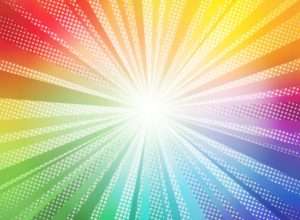 In the digital age, vectorizing images has become a common practice in graphic design and image processing. The process involves taking a raster image, such as a photograph, and converting it into a vector format. This allows designers and artists to create high-quality, scalable images that can be used for a variety of purposes, from printing to web design.
In the digital age, vectorizing images has become a common practice in graphic design and image processing. The process involves taking a raster image, such as a photograph, and converting it into a vector format. This allows designers and artists to create high-quality, scalable images that can be used for a variety of purposes, from printing to web design.
But how exactly does vectorizing work? And how do we take fuzzy photos and turn them into clean vector art? Let’s dive into the world of vectorization.
First, it’s important to understand the difference between raster and vector images.
Raster images, like photographs, are made up of tiny pixels that form the overall image. This means that when you zoom in on a raster image, you start to see the individual pixels and the image becomes pixelated and blurry.
On the other hand, vector images are created using mathematical equations and geometric shapes like lines, curves, and polygons. This means that vector images are infinitely scalable without losing quality or becoming pixelated. They also tend to have smaller file sizes than raster images, making them ideal for web design and other digital applications.
Now, let’s talk about the process of vectorizing a raster image. The first step is to import the image into a vector graphics software like Adobe Illustrator or Inkscape. Once the image is imported, the software uses a process called tracing to create a vector version of the image.
Tracing involves analyzing the pixels in the image and creating a set of curves and shapes that closely match the original image. This process can be done automatically using the software’s tracing tools, or it can be done manually by tracing over the image with the Pen tool.
Once the vector image has been created, the designer or artist can refine the image by adjusting the curves and shapes, changing colors, and adding other design elements. The result is a clean, crisp vector image that can be scaled up or down without losing quality.
But what about those fuzzy photos we mentioned earlier? How do we turn them into clean vector art? The answer is that it depends on the quality of the original image. In general, the better the quality of the original image, the easier it will be to create a high-quality vector version.
If the original image is too blurry or pixelated, it may be difficult or impossible to create a high-quality vector version. However, if the image is slightly blurry or has some noise, it may still be possible to create a vector version that looks clean and crisp.
In conclusion, vectorizing images is a valuable tool for designers and artists who want to create high-quality, scalable images. While it may not be possible to turn every fuzzy photo into clean vector art, the process of vectorization can help to create stunning images that are perfect for a wide range of applications.


